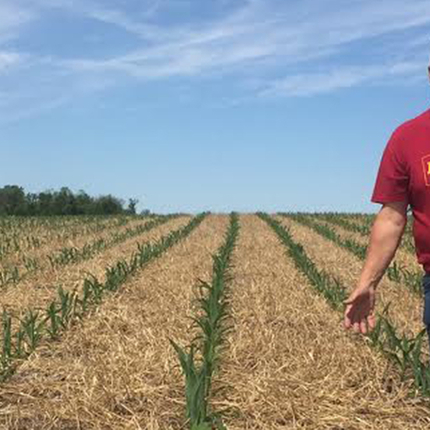Published on Iowa Farmer Today, June 24, 2017.
Farmers are master jugglers: They manage crops, maintain equipment, and market products, often while balancing a second job and family demands.
Adding a dispute with a crop insurance company is often the last thing farmers need.
That’s exactly the situation Kevin Glanz, a farmer near Manchester, Iowa, found himself in last spring.
Kevin, who also sells seed and serves on his county Farm Bureau board, has been planting cover crops for five years. Last year, Kevin’s crop insurance agent raised concerns about his cover crop planting practices.
The insurance company immediately implemented a quality control audit on Kevin, who was forced to grant the company unlimited access to his farm. Even after three in-person inspections, Kevin received a clear message that if he filed a claim in the fall, the insurance company might refuse to cover his loss due to a cover crop practice.
Kevin has since switched agents and insurance companies, and they have been much more receptive to his cover crop practices than his previous company.
Crop insurance is managed by the federal government, which underwrites policies. The government also establishes Good Farming Practices to help farmers and insurance companies have a common understanding of what constitutes good management of a crop. The Good Farming Practices do not address cover crops and their conservation benefits, so the government has an additional set of guidelines that describe when farmers should terminate their cover crops before planting their main crop in order to remain eligible for crop insurance.
Even with these guidelines in place, many crop insurance companies do not have expertise in conservation. They are often still wary of how conservation activities, such as cover crops, work within a cropping system, and can therefore be reluctant to provide coverage for them.
Many farmers are also unfamiliar with planting cover crops. Trying out a new practice during a tight farm economy can seem like too high of a barrier for many. Farmers need to know that if they try a new practice, they can still depend upon their crop insurance.
Billions of taxpayer dollars go to crop insurance companies to provide products to farmers. The government spent nearly $8 billion on administering crop insurance in 2015, including support for farmers’ crop insurance bills (or premiums), the indemnities they received and reimbursement to crop insurance companies for certain expenses. ...
With Congress beginning its preliminary work on the next farm bill, we urge our elected representatives to consider policies that encourage crop insurance companies to support conservation practices such as cover crops. For example, the Risk Management Agency could integrate cover crop termination rules into the existing Good Farming Practices guidelines.
In addition, claims adjusters could be required to take continuing education classes on agronomic practices such as cover crop management. These sorts of changes would go a long way toward reducing the barriers farmers face when considering whether to plant cover crops.





